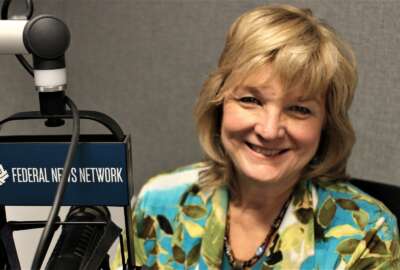

Being a federal/postal worker can be satisfying and challenging at the same time. Being a married federal/postal worker can be doubly so.
Being a federal/postal worker can be satisfying and challenging at the same time. Being a married federal/postal worker can be doubly challenging and satisfying simultaneously.
Being a married federal/postal worker with a spouse and Social Security is even more challenging, though sometimes more satisfying, too.
That combination prompted Jim, a reader and 35-year Treasury Department employee planning to retire at age 62, to ask this question: “Can my wife (non-fed) collect her Social Security at [age] 62, and then at [age] 70 switch and collect her spousal benefit from my Social Security benefit? My Social Security payment will be much higher than hers, and I don’t plan on collecting my benefit until age 70.”
Naturally I didn’t have a clue. But it came last week during our Your Turn radio show. Benefits expert Tammy Flanagan was the guest and, although she now has a client-based service counseling feds and retirees, she agreed to answer it. Here’s her answer and you can see why I didn’t have it:
“If she was born before 1954, she could file a restricted application on his work record at her full retirement age (65 – 67 years old) and delay her own until age 70, but that’s not what he’s asking.
“She can file for Social Security at age 62 and she will be deemed to be filing on any benefit she is entitled to. If he hasn’t filed yet, then she will get her own at that time. When he files, if the benefit based on his work record is higher, then hers will increase to the higher amount. If she filed at age 62, then her spousal benefit amount will be less than 50% based on her year of birth.”
The Social Security Administration has an online calculator for spousal benefits.
Tammy continued, “When a worker files for retirement benefits, the worker’s spouse may be eligible for a benefit based on the worker’s earnings. Another requirement is that the spouse must be at least age 62 or have a qualifying child in her or his care. By a qualifying child, we mean a child who is under age 16 or who receives Social Security disability benefits.
“The spousal benefit can be as much as half of the worker’s ‘primary insurance amount,’ depending on the spouse’s age at retirement. If the spouse begins receiving benefits before ‘normal (or full) retirement age,’ the spouse will receive a reduced benefit. However, if a spouse is caring for a qualifying child, the spousal benefit is not reduced.
“If a spouse is eligible for a retirement benefit based on his or her own earnings, and if that benefit is higher than the spousal benefit, then we pay the retirement benefit. Otherwise we pay the spousal benefit.”
By Amelia Brust
Candy companies often sell their defective sweets, that cannot be sold in stores, to cattle farmers for feed. High corn prices brought on by drought caused the prices of cattle feed to rise, so rather than deposit the food into landfills companies like Skittles began selling them to farmers to supplement the grains they feed their livestock. These also include marshmallows, chocolate, sugary cereals and gummies — anything to satisfy a cow’s need for starchy sugars.
Source: Reuters
Copyright © 2025 Federal News Network. All rights reserved. This website is not intended for users located within the European Economic Area.
Mike Causey is senior correspondent for Federal News Network and writes his daily Federal Report column on federal employees’ pay, benefits and retirement.
Follow @mcauseyWFED


